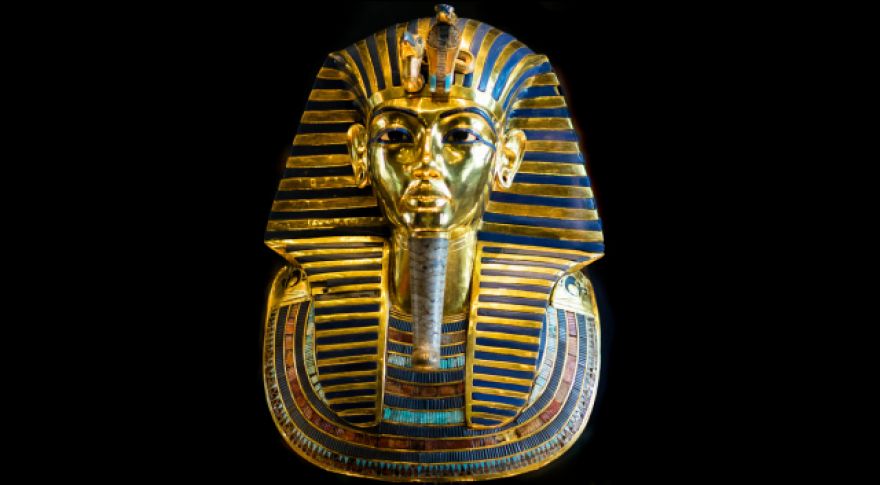
Ancient dagger found with King Tut forged with meteoric iron
Researchers have confirmed that an iron dagger found buried with King Tutankhamun has a composition similar to iron meteorites and was almost certainly created from so-called “meteoric iron.” The discovery sheds new light on the state of metallurgy in ancient Egypt.
The discovery of metallurgy and the refining of the metallurgical techniques required to shape various metals into useful tools were some of the most important discoveries in all of human history. While terms like “Bronze Age” only loosely correlate to specific archaeological periods, they still convey the importance of specific metals to the people living at that time.
One of the puzzles archaeologists still grapple with is how and when various cultures learned to smelt and work with iron. Unlike copper, which melts at a moderate temperature achievable in kilns, or tin, which melts at just 231.9 degrees Celsius, iron must be refined in dedicated furnaces and is almost never found in pure form on the Earth’s surface (it reacts with both oxygen and water and rapidly corrodes).
The Willamette meteor was sacred to the indigenous people of the Wilamette Valley, who called it Tomonowos, meaning “The visitor from the sky.”
There is, however, another source of iron on the Earth’s surface. Iron-nickel meteorites, which make up about 6% of all the meteors that survive re-entry, were worked by ancient peoples to create small items, tools, and ceremonial objects. The native Inuit of Greenland were known to have used fragments of the massive Cape York meteorite to create harpoons and tools, and objects made from meteoric iron using cold forging (stamping and hammering the metal) have distinctive visual characteristics, known as Widmanstätten patterns.
The alloys produced by the combination of iron and nickel have different properties depending on the exact ratio of the two metals, but blades or tools made from meteoric iron could have been a significant improvement over bronze. Because meteoric iron was rare, its value is believed to have been significantly greater than gold. Ancient people who saw these meteors fall from the sky often attributed their presence to the actions of gods, and believed the iron-nickel alloy was a gift.
What King Tut’s dagger can tell us
Tutankhamun’s iron dagger was discovered by Howard Carter in 1925 and immediately recognized as being of great historical significance. The surviving records of ancient Egypt actually refer to a gift of iron being made prior to King Tut’s ascension to the throne, and he was found buried with 16 miniature iron blades, and a miniature headrest made from the material. Initial tests to determine if the dagger was made from meteoric iron seemed to indicate it wasn’t. More modern tests run on highly sensitive equipment have shown that the blade’s metallurgical makeup means a meteoric origin. The research team may have even found the source meteorite used to make the blade — its iron/nickel ratios are best reflected by a single known rock, named Kharga (named after the Kharga Oasis, which is located within both ancient and modern Egypt), and located (or relocated) in the year 2000.
King Tut’s dagger
The craftsmanship and skill employed to make the blade imply that ironworking was already somewhat known to the ancient Egyptians. That’s significant, because the first iron working mentioned in surviving Egyptian records date to around 1000 BC. The notes one interesting change in Egyptian hieroglyphics that also occurs about this time. Prior to the 19th Dynasty (King Tutankhamun was a member of the 18th Dynasty), the hieroglyphic for iron had a very broad meaning that could be interpreted as “mineral, metal, iron.” During the 19th Dynasty, the term changed and is best translated as “Iron of the sky.” Inscriptions found at Karnak from the same period may make reference to meteor iron as well.
Further tests would be needed to determine exactly how the dagger was forged and to shed additional light on ironworking in ancient Egypt. But this latest analysis and subsequent information in the historical record suggests that while the ancient Egyptians were capable of ironworking when King Tut ruled, they may not have become aware of meteoric iron and its capabilities until his reign. Within 100 years, they’d changed their language to refer to this “iron from the sky” and begun to craft iron tools and weapons rather than those of bronze. Nearly a century after Howard Carter found Tutankhamun’s tomb, we’re still learning from the artifacts and items preserved there — while the tomb itself .